|
|
|||
|
(Back to Preceding Week; on to Next Week) |
|
|
|
AUTUMNAL DELIGHTS
Because the autumnal equinox occurred on 22 September, it's correct to say October is the first full month of fall--even though two days this week the thermometer registered 90-plus degrees at Hilton Pond Center! We're sure temperatures will soon abate so that fall will be its typical terrific time of the year, with migrant birds from up north passing through, tall wildflowers adorning the fields, and insects trying to finish up the business of mating before cold weather arrives. Even though spring is a welcome relief from a long, dark winter, there's something very special about the urgency of autumn and the natural delights it brings.
All text & photos © Hilton Pond Center One of our favorite parts of fall is the appearance of the adult stage of the Carolina Mantid, Stagmomantis carolina, the Palmetto State's official insect. These robotic creatures are at the top of the food chain in the insect world, and they stalk through our local Goldenrod patch with deliberate intensity. One day this week we were surprised to find one of these little mantids in a very different habitat--just outside our office window and INSIDE wire mesh hummingbird trap hanging on the back deck. This enterprising praying mantis was perched head-down on the side of a hummingbird feeder (above), poised to lash out at prospective sugar-loving prey with its pincer-like forelegs. Although there are rare records of praying mantises taking hummingbirds at feeders, these are always the much-larger Chinese Mantid, Tenodera aridifolia sinensis, which can grow more than five inches in length. Our much-smaller Carolina Mantid--only two inches long--is incapable of capturing a hummer. When we looked closer at the feeder and the mantid perched on it, we noticed something else of interest: A little pile of insect legs stuck to red plastic beside the feeder's fake flower (above). We smiled when we realized these black and yellow legs were the remains of a now-deceased Yellow Jacket, undoubtedly one that had been harassing hummingbirds trying to lap sugar water from the feeder. We don't use insecticides to rid our feeders of these pesky, stinging insects, so it was nice to know our maintenance-free, environmentally safe Carolina Mantid was doing its part to reduce the Hilton Pond Yellow Jacket population.
Later the day of the mantid sighting, we spotted another "unusual" insect in a more typical habitat: A local meadow populated by Goldenrods, Broomsedge, and wild asters. Perched on top of a dead, seven-foot-tall plant stalk was a bright, orange-red dragonfly we'd never seen before at Hilton Pond Center and, in fact, that we didn't recognize at all. We got out our 100mm macro lens, got as close as we could without disturbing the dragonfly, and fired off a few shots with our digital camera. Fortunately, this particular insect was in no hurry to fly and continued to sun itself, spread-winged, in the waning afternoon light. Upon returning to the old farmhouse, we downloaded our digital images and began perusing Dragonflies Through Binoculars, our standard photographic guide for the Odonata (Dragonfly Order). Based on size and body shape, we suspected the dragonfly was in the Skimmer Family (Libellulidae); sure enough, when we got to that section of the field guide we found a photo that appeared to match ours: Autumn Meadowhawk (formerly Yellow-legged Meadowhawk), Sympetrum vicinum. Although most dragonflies disappear by October, meadowhawks often hang around through autumn and--as their name suggests--prey upon insects away from aquatic habitats. This Autumn Meadowhawk is the twelfth dragonfly species identified at the Center.
As noted, the aptly named Yellow-legged Meadowhawk at Hilton Pond Center was photographed in a small meadow populated by several types of plants, not the least of which is Broomsedge, Andropogon virginicus. Broomsedge--a common early successional plant in old fields and roadsides--is often overlooked, but we find it to be a very attractive plant in all seasons. During spring and early summer its three-foot stems and leaves maintain a bright green and red color despite lack of moisture, but in winter Broomsedge greenery turns a rich golden brown that brings a special aura to the landscape--especially against a blue sky in late afternoon. Right now, in early fall, the Broomsedge at Hilton Pond Center is still mostly green--except for tufts of dazzling white seed fuzz that seem to glow when backlit (above). Every stalk has at least one hairy seed cluster, which helps explain how there can be so much Broomsedge coming up so soon after an old field goes fallow. It doesn't take much wind to scatter all these feathery Broomsedge seeds--providing Field Sparrows and Dark-eyed Juncos don't eat them all come winter.
And speaking of birds, an exciting things about fall is that a bird bander never knows just what to expect on any given check of the mist nets. Some days our captures may all be locally fledged Northern Cardinals and Carolina Chickadees, while other times we get a colorful mix of warblers or a net full of thrushes. One morning this week we retrieved two young male tanagers from the same net, and since they were from two different species it gave us an excellent opportunity to compare. We actually get to band more Summer Tanagers (above right) because they nest at or near Hilton Pond Center, so one of the first things we notice upon handling a migration-only Scarlet Tanager (above left) is its somewhat smaller, more slender body. Size difference shows up especially in the with regard to the two birds' bills. The Summer Tanager's is undeniably stout while that of the Scarlet Tanager is smaller and, in our experience, more heavily "toothed"--i.e., having a projection about halfway back on the edge of the upper bill.
While we're comparing things, let us mention that people seldom argue when we claim the Trumpet Creeper vine, Campsis radicans--with its bright orange tubular flowers bearing copious nectar--is perhaps the quintessential native North American plant for attracting hummingbirds. They're often surprised, however, when we tell them Trumpet Creeper is in the same plant family (Bignoniaceae) as the Southern Catalpa tree, Catalpa bignonioides. Taxonomists group organisms together when they have certain common characteristics; for botanists, among the most important traits are flowers and seeds. The Southern Catalpa's blossom, although shorter than that of Trumpet Creeper, is also tubular, but another character that shows the two plants' relatedness is the seed pod. Both Trumpet Creeper (above left) and Southern Catalpa (above right) produce seeds within an elongated pod. However, the catalpa pod is up to 18" long--about twice the length of the one produced by Trumpet Creeper--and is also much skinnier, but the basic structure is the same: For each plant the pods have two sides that split open to reveal numerous seeds, each with a flat, papery wing.
Our final autumnal delight this week came when we spied something very bright and very blue protruding from a ground-level cavity at the base of a Pecan tree beside the old farmhouse. We recognized it as the rear end of a lizard--in particular, one of the blue-tailed skinks. In the Carolinas, juveniles for three species of lizard have blue tails, but we mostly see just one at Hilton Pond Center: The Five-lined Skink, Eumeces fasciatus. We weren't able to verify from looking at the lizard's tail if it was indeed this species--the skink didn't seem interested in backing out of the hole-- Mantids stalking Yellow Jackets . . . dragonflies and skinks soaking up the sun . . . tanagers migrating through on their way south . . . Broomsedge, catalpas, and Trumpet Creepers all setting seed--these are just some of many fall occurrences at Hilton Pond Center. We'll wager neat things equal to these are happening in YOUR backyard--an ample excuse to get outdoors to enjoy your own autumnal delights. All text & photos © Hilton Pond Center
Comments or questions about this week's installment?
Thanks to the following fine folks for recent gifts in support of Hilton Pond Center for Piedmont Natural History and/or Operation RubyThroat: The Hummingbird Project. Your tax-deductible contributions allow us to continue writing, photographing, and sharing "This Week at Hilton Pond." (Please see Support if you'd like to make a gift of your own.)
IMPORTANT NOTE: If you ever shop on-line, you may be interested in becoming a member of iGive, through which nearly 700 on-line stores from Barnes and Noble to Lands' End will donate a percentage of your purchase price in support of Hilton Pond Center and Operation RubyThroat. For every new member who signs up and makes an on-line purchase iGive will donate an ADDITIONAL $5 to the Center. Please sign up by going to the iGive Web site. It's a painless, important way for YOU to support our work in conservation, education, and research. "This Week at Hilton Pond" is written & photographed You may wish to consult our Index of all nature topics covered since February 2000. You can also use our on-line Hilton Pond Search Engine at the bottom of this page. For a free, non-fattening, on-line subscription to |

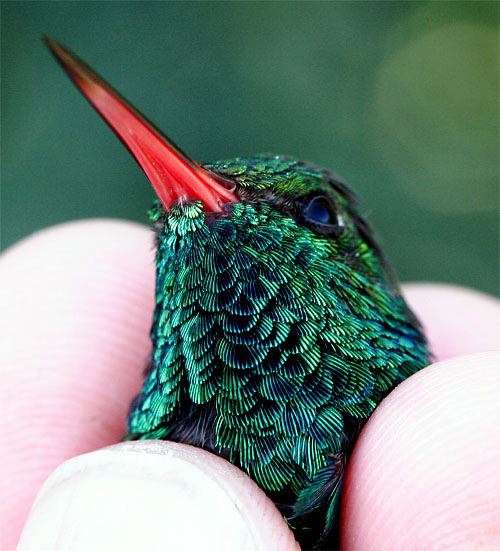 Week One of our annual
Week One of our annual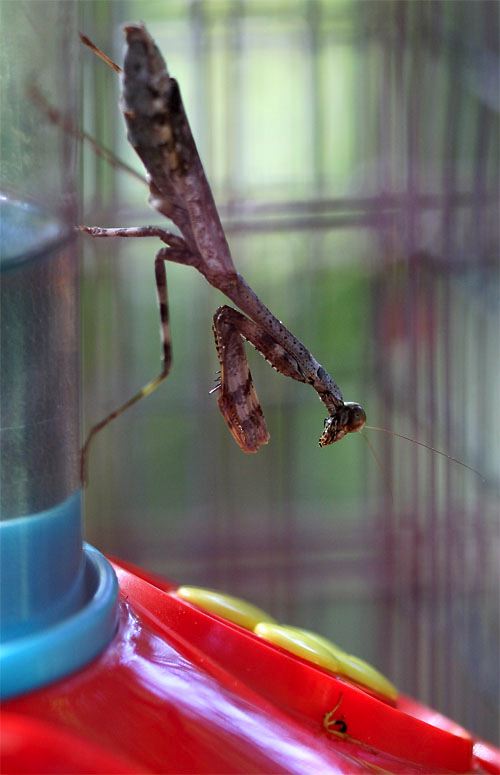


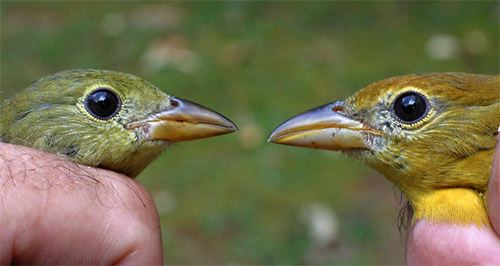
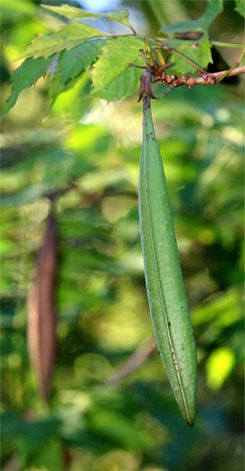 .
. 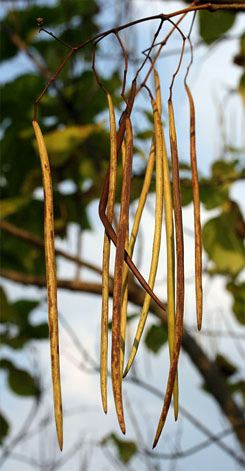
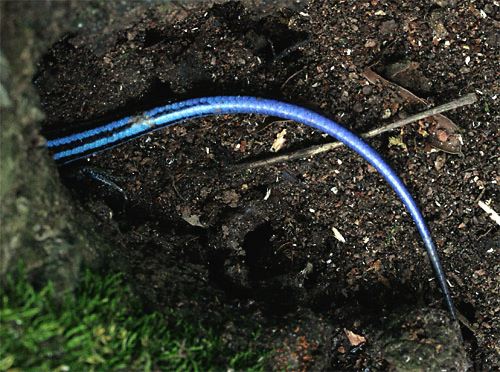
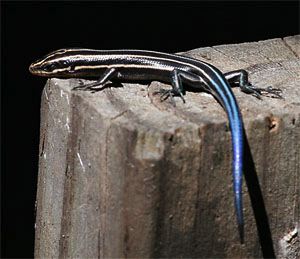 so we'll never know if could have been the closely related but more elusive Southeastern Five-lined Skink, E. inexpectatus. Coincidentally, later in the day we saw a different blue-tail sunning on a post (right), and we WERE able to identify it. In the photo above right, the apex of a V-shaped yellow marking on the lizard's head touches the anterior end of a central yellow line on its backbone; in E. inexpectatus the dorsal line does NOT touch the V-mark, so that meant the lizard on the post was "just another" E. fasciatus.
so we'll never know if could have been the closely related but more elusive Southeastern Five-lined Skink, E. inexpectatus. Coincidentally, later in the day we saw a different blue-tail sunning on a post (right), and we WERE able to identify it. In the photo above right, the apex of a V-shaped yellow marking on the lizard's head touches the anterior end of a central yellow line on its backbone; in E. inexpectatus the dorsal line does NOT touch the V-mark, so that meant the lizard on the post was "just another" E. fasciatus.

 Please report your
Please report your
